When I began writing this, there was a boat standing bolt-upright on its bow, held in place by a rope wrapped around its stern and pinched in a window sash on one of my upstairs bedrooms. The boat is an 18′ kayak that belongs to my friend Freya Hoffmeister, from Husum, Germany. She’s currently paddling it around North America, not in the here-and-there sense of “around,” but as in circumnavigating the continent, some 30,000 miles of paddling.
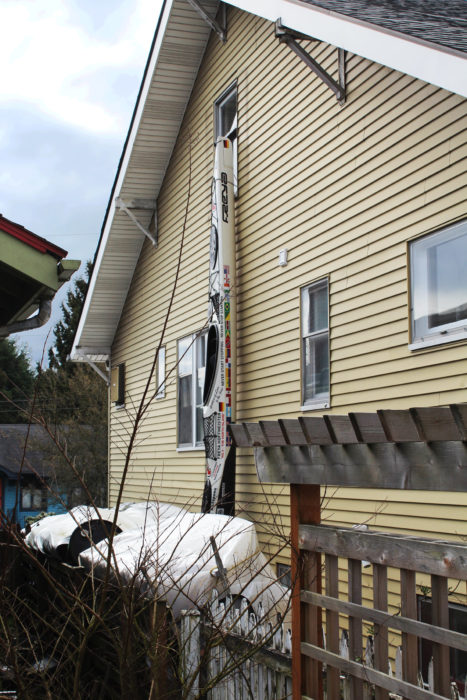
To fix a leak at the grab-loop hole, we set the kayak on end up against my house to get epoxy to settle in the bow.
I met Freya in 2005 at a sea-kayak symposium on Spain’s Mediterranean coast. She hadn’t been kayaking for long at that point, but she had already mastered dozens of the rolling techniques that are part of Greenland’s kayaking competitions. While at the symposium she so often shared her skills by teaching other kayakers there that at the end of the event, the symposium organizers returned to her the money she had paid to attend. The following year she participated in the Greenland National Championships and won the women’s division for rolling with a score that would have put her third among the men.
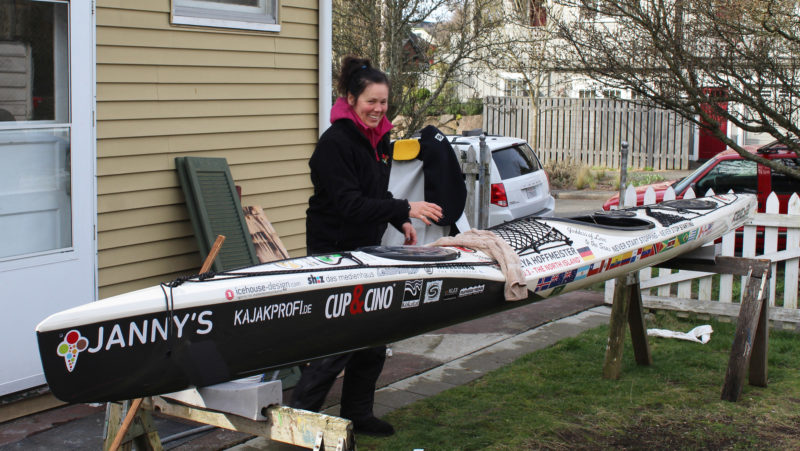
Freya’s kayak was designed and built to meet her specifications. The dip in the sheer line maintains buoyancy and cargo capacity in the bow while providing clearance for her paddle stroke. Stickers lined up on the hull alongside the cockpit are flags of the 19 nations where she has paddled the entire coastline.
She’s not one to do things by half measures—in past she competed in gymnastics, bodybuilding, and beauty pageants. She took an interest in skydiving, and among her 1,500 jumps, was the first tandem jump over the North Pole. She was, of course, the pilot and not the passenger. When she set her sights on sea kayaking she aimed high, then higher. She has circumnavigated Iceland, New Zealand’s South Island, Australia, South America, and Ireland. Australia had only been circumnavigated by kayak once before, by Paul Caffyn in 1981–82.
Others had tried to duplicate the feat but failed, but Freya not only didn’t fail. She bested Caffyn’s record. He did his circumnavigation in 360 days; Freya did it 322, covering 7,446 nautical miles. She paddled around South America in three legs, covering nearly 14,500 nautical miles. Her current project started in Seattle on March 25 and will cover around 27,000 nautical miles, which will be completed in several legs over the next eight to ten years. She’ll do the circumnavigation in two half-loops ending in New York City, one clockwise around the top of North America and the other counterclockwise through Central America by way of the Panama Canal.
Freya faced a lot of skepticism and criticism when she announced her plans to circumnavigate Australia. Few thought she had a chance of succeeding, and some thought she wouldn’t survive the attempt. There were unquestionably some formidable passages and dangerous waters she had to contend with. She took a 360-mile “short-cut” across the Gulf of Carpentaria, opting for box jellyfish and sea snakes rather than follow a longer route along shore dodging salt-water crocodiles. The crossing took eight days and she spent seven nights sleeping aboard her kayak; her paddle and a pair of floats served as a stabilizing outrigger. Monotony seemed to be the main challenge—Freya called me by satellite phone somewhere in the middle of the Gulf, and in the midst of this very risky endeavor, her only complaint was about the boredom.
Freya is surprisingly dismissive of things that most of us would find unnerving at best and terrifying at worst. During her circumnavigation of South America, she was crossing the mouth of the Amazon River, at night, and got caught by a tidal bore. She was side-surfed for 5 miles, bracing nonstop into the wave with her paddle. Her GPS recorded speeds of 15 miles per hour, sideways. She ultimately was freed from the wave when she capsized. The incident left the cockpit half-filled with fine sand so tightly packed that she couldn’t scoop it out with her hands—she had to dig it out with a metal spoon. She told this story to us at a family dinner—we were all wide-eyed—and ended it, as she often does with: “Yeah, well, it is like it is.”
A week before setting out from Seattle on this latest adventure, she hadn’t decided whether to head north along the Inside Passage to the east of Vancouver Island or to take on the island’s Pacific Coast. I had only a few miles of personal experience on the west side, having rowed a dory around Cape Scott at the northern tip, only to get stormbound for five days in the first bay. I knew that the Brooks Peninsula had a reputation for nasty conditions, and while I was in the middle of cautioning her about that area, it occurred to me that anyone who has kayaked around Cape Horn won’t be daunted by Brooks.
Freya went out for an afternoon paddle here in Seattle to take a break from all the work she’s been doing with logistics and gear. After a 20-mile tour that included the downtown waterfront, she discovered a half cup of water in the forward compartment. We discovered a leak in the hole in the bow for the cord of her toggle. We removed the toggle, set the kayak against the house, stern up, and pooled epoxy in the bow until a little bit wept out of the hole.
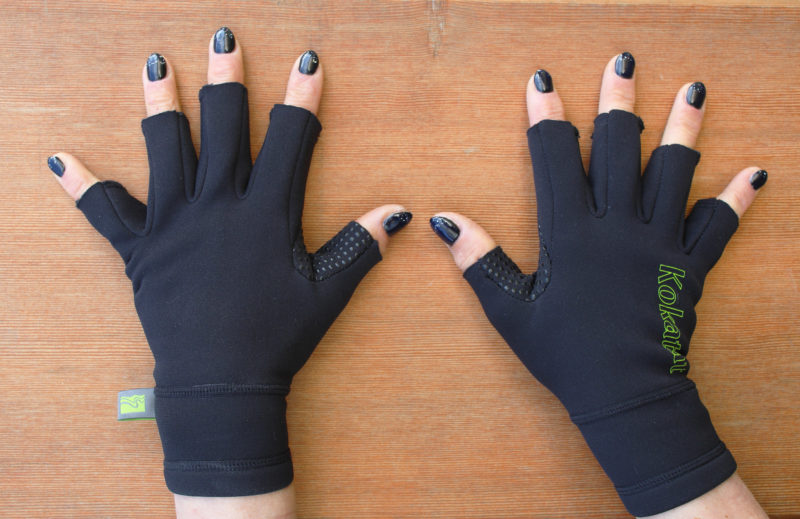
Freya favors gloves that leave her fingertips free for operating electronics and tending to to the many chores that come up while paddling. She reports that these gloves are warmer than gloves that completely cover her fingertips. The fingernail polish is more practical than decorative. It reinforces her fingernails and makes them less prone to breaking.
With that repair made—and a trip to the salon for a manicure—Freya was ready to go. We drove to a beach in a city park north of downtown Seattle. Surrounded by a group of people who had come to see her off, she packed her kayak, dragged it across the sand, and got aboard. As we post the April issue, Freya is making her way along the west coast of Vancouver Island. She’ll paddle around the Brooks Peninsula and through whatever the Pacific has to throw at her there—it is like it is—she’ll be undeterred.
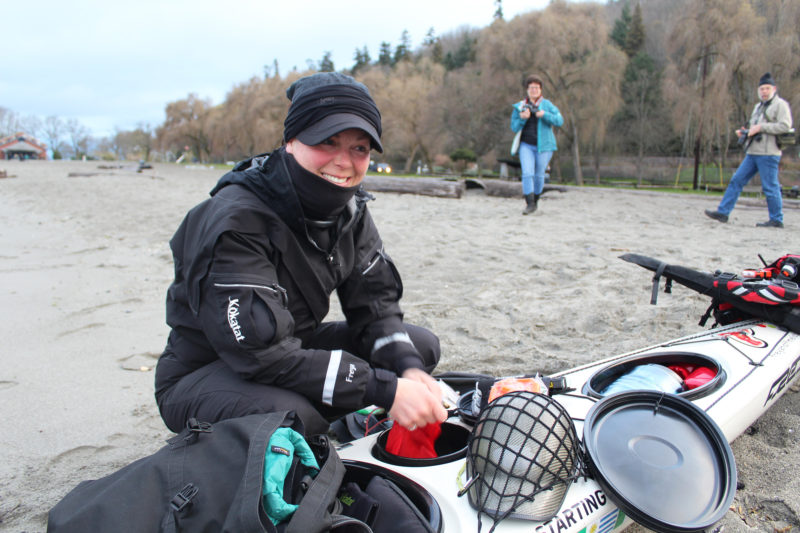
Freya got her reputation as “The Lady in Black” back in 2005 and still prefers black clothing afloat and ashore.
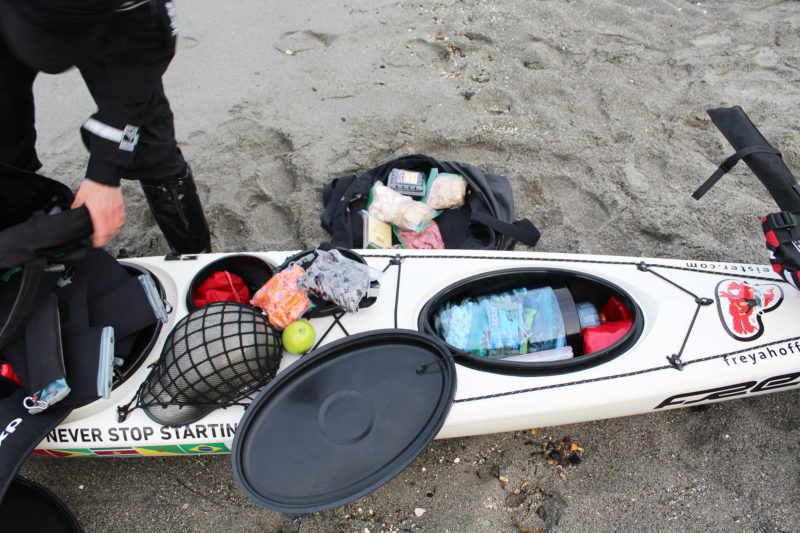
Freya’s gear included food in bear-proof containers, a helmet for surf landings, three GPS units, an EPIRB, and a VHF radio. She carries everything she needs to be self sufficient for weeks at a time.
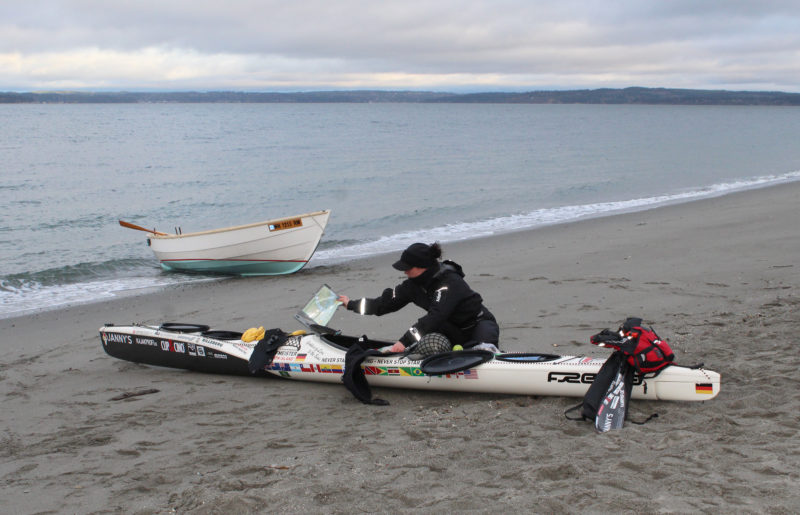
Almost ready to depart, Freya finishes packing her kayak at the Golden Gardens beach in Seattle. I brought my Caledonia yawl along, with outboard power, as a photo platform.
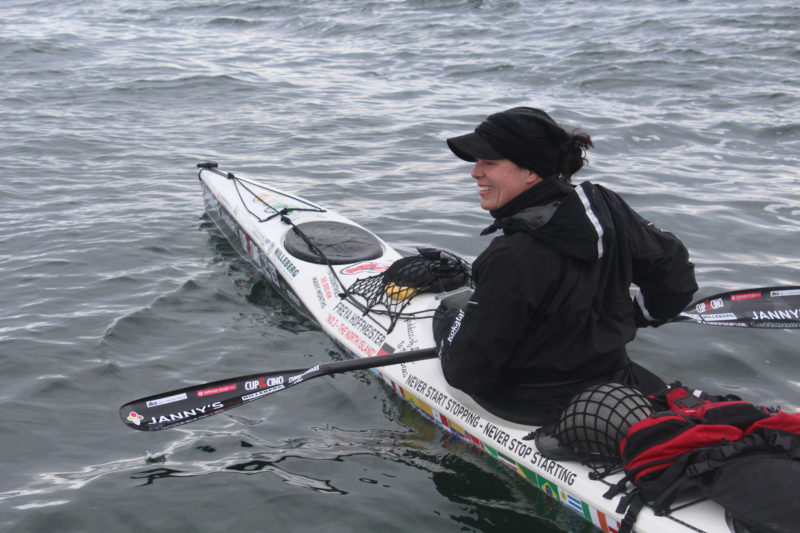
The motto that Freya has adopted at age 52 is displayed alongside the cockpit: “Never start stopping; never stop starting.”
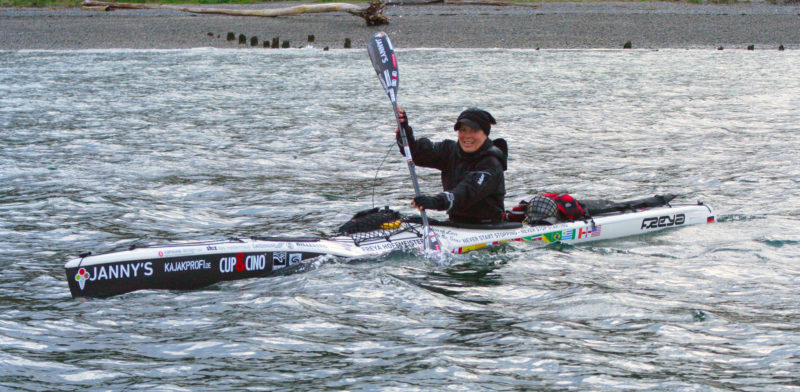
Freya set out from Seattle on her 30,000-mile adventure on March 25, 2017.
Freya will be documenting her progress over the next eight to ten years with regular posts on her website.![]()
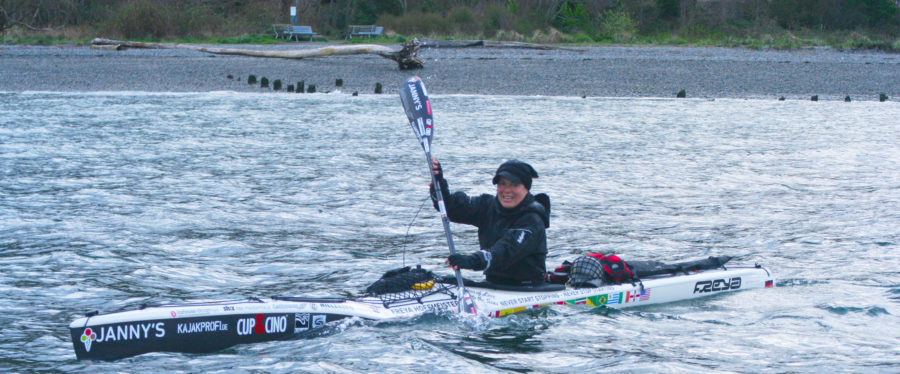
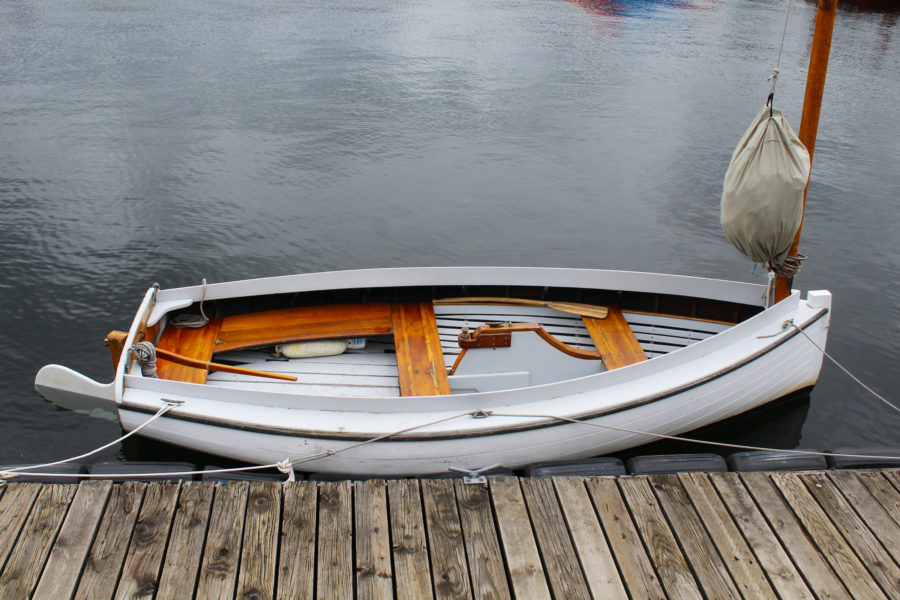
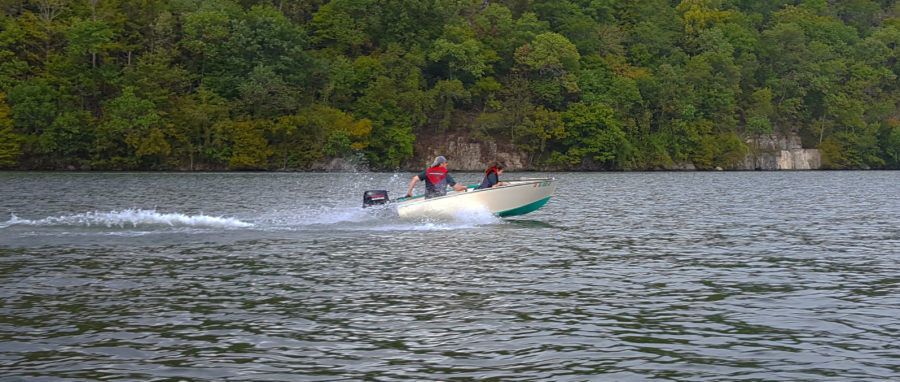
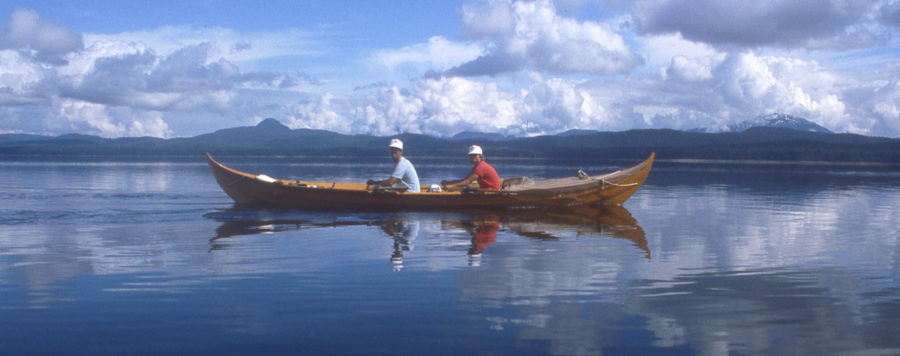
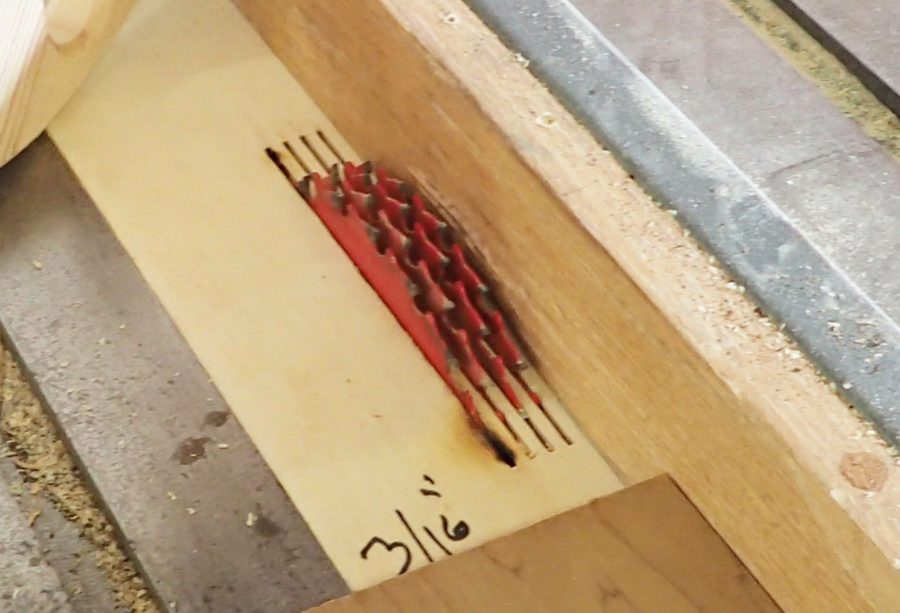
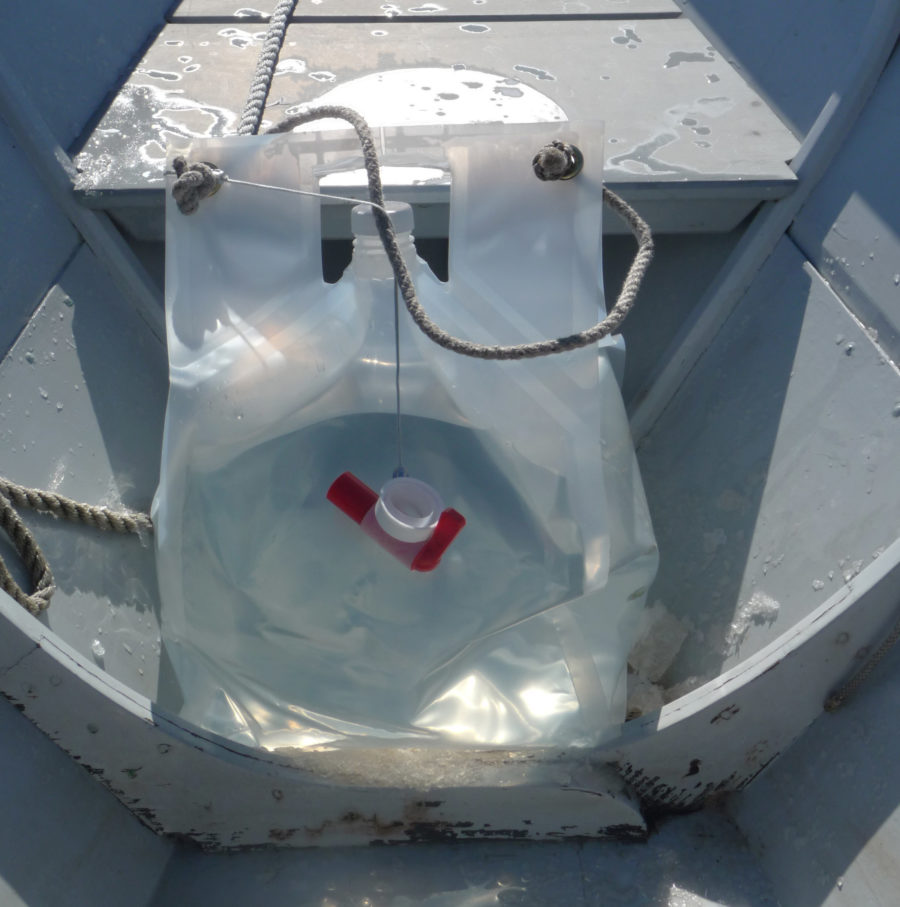
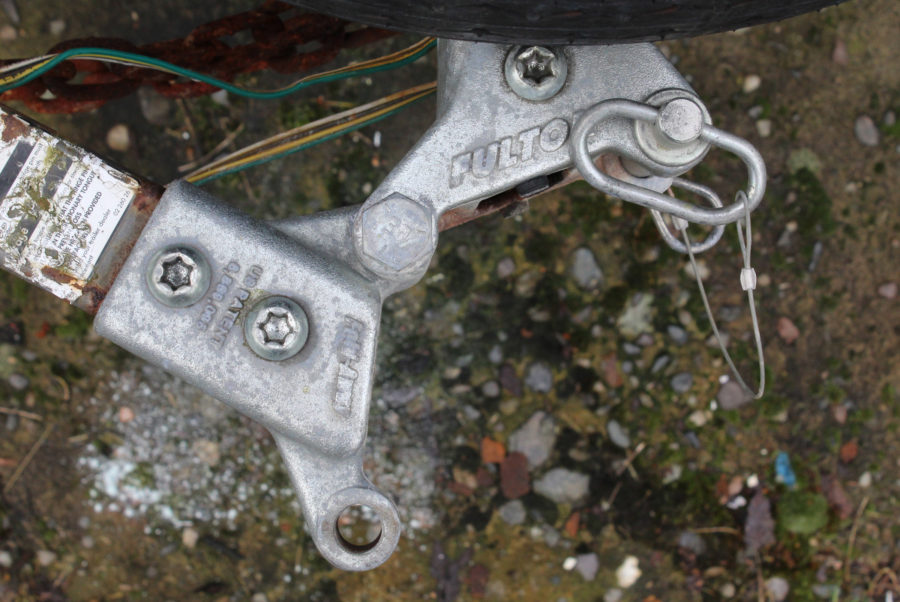
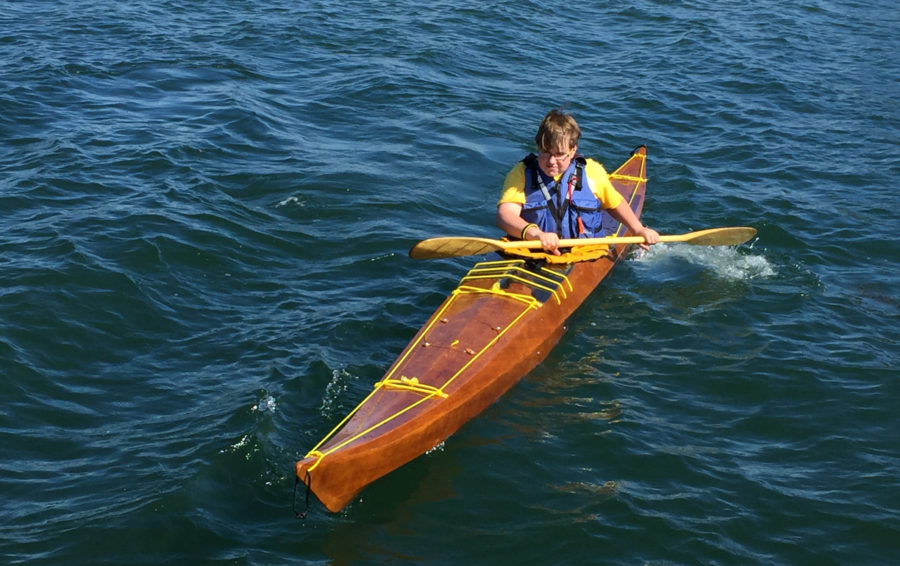
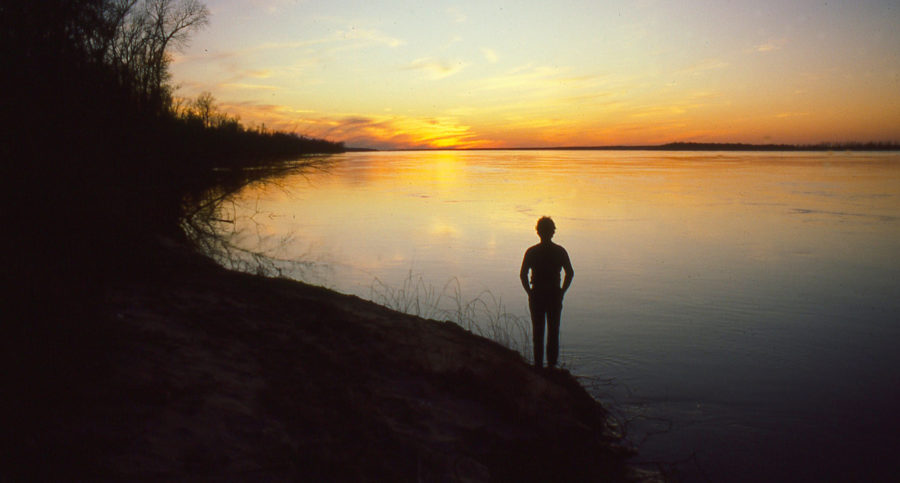
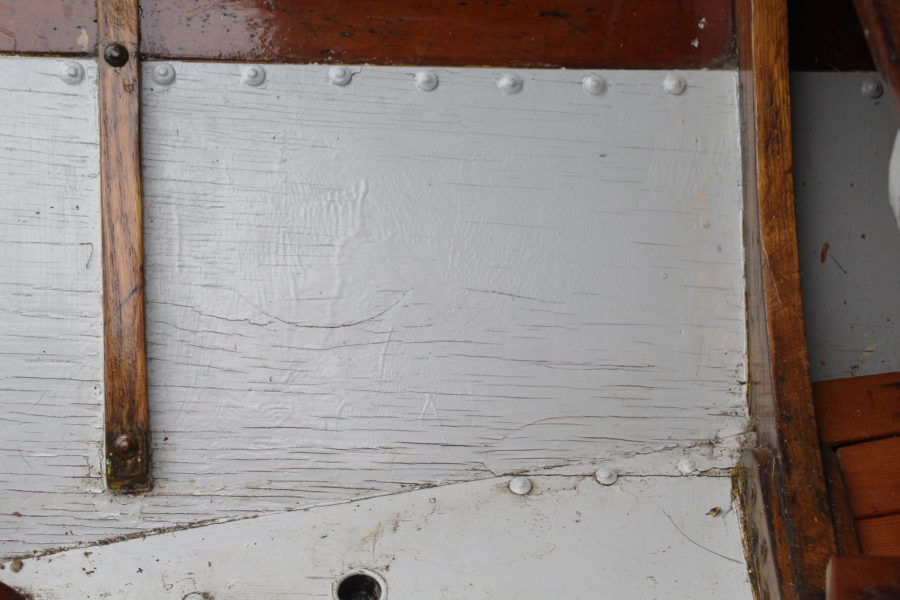
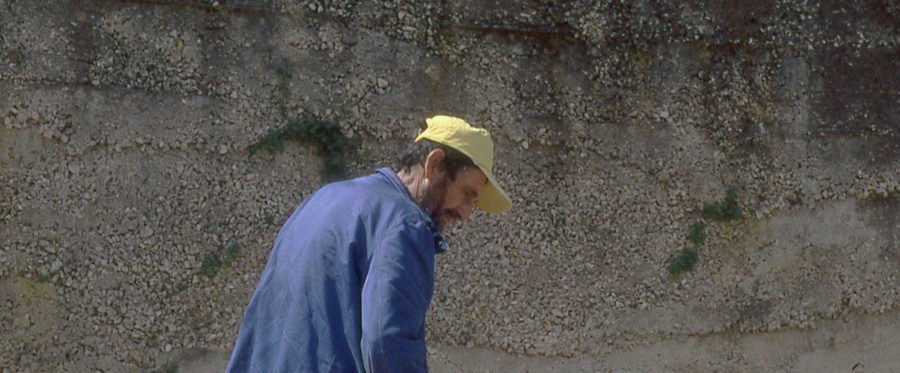

Great write up. I have recently read Fearless: One Woman, One Kayak, One Continent, and I am totally inspired by Freya. She is a amazing person.